In this article, you will learn about what is stress in the strength of materials, their unit, and types of stress with numerical problems. So let’s begin our study…
What is Stress?
Stress is defined as the resistance force acting per unit cross-section area of the body. It is also defined as the ratio of applied load to the cross-section area of the body.
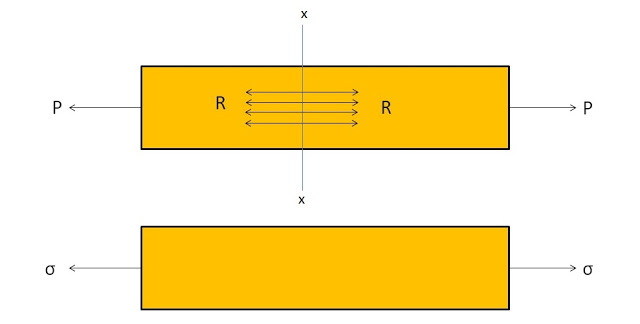
Let’s understand this while taking an example. Considered a body which is subjected to an external load (P). Due to this applied load, internal forces induce within the body. This internal force is called as resisting force (R) and the direction of resisting force is opposite to the direction of the applied load. The resisting force induced resists the deformation in the body. When this resisting force is taken on a unit basis, we get a quantity called stress. Within a certain limit, the resisting force induced in the body is proportional to the deformation produced. This certain limit is called elastic limit. Within this elastic limit, the resistance force equals to the applied load.
So finally, the stress is defined as the ratio of applied load to the cross-section area. It is denoted by the symbol σ (sigma).
Mathematically,
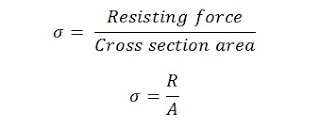

Since within elastic limit, resisting force is equals to the applied load i.e. P = R. So
Where,
- R = Resisting force induced in the body.
- P = Load applied on the body.
- A = Cross Section area of the body.
Units of stress
Since the unit of the load is N and the unit of cross-section area is m2 or cm2 or mm2. So the SI unit of stress is N/m2 or N/cm2 or N/mm2. Generally in numerical problems we use N/ m2 or N/mm2.
Relation between units of stress:
1 MN/m2 = 106 N/m2
= 102 N/cm2
= 1 N/mm2
Types of Stress
The various types of stress in the strength of materials are:
1. Normal Stress:
The stress that acts perpendicular to the cross-section area is called normal stress.
Normal stress is further subdivided into two types
- Tensile stress
- Compressive stress
(i). Tensile Stress:
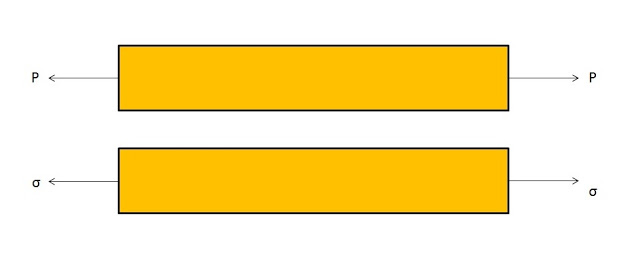
When a body is subjected to two equal and opposite pulls, then the stress induced in the body is called tensile stress. Tensile stress results in an increase in length and a decrease in the cross-section of the area of the body.
(ii). Compressive Stress:

When a body is subjected to two equal and opposite pushes, then the stress induced in the body is called compressive stress. Compressive stress results in an increase in the cross-section area and a decrease in the length of the body.
Shear Stress:
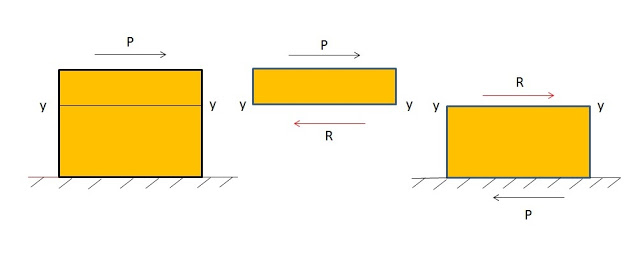
When a body is subjected to two equal and opposite forces acting tangential to the resisting section than the stress induced in the body is called shear stress. The shear stress tries to shear off the resisting section. The shear stress acts tangential to the area. It is denoted by the symbol ‘τ’ (tau).
For a better understanding of what is stress let’s see this numerical problem
Supposed we have given a bar of cross section area 20 mm2 and it subjected to a tensile load of 60 N. then calculate the stress induced in the body.
Solution:
Given: P = 60 N; A = 20.
Then from the definition of stress, the stress is given by
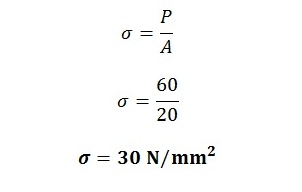
This is all about what is Stress, units of stress, and types of stress in the strength of materials. If you find anything missing or incorrect then comment us. And if you find this piece of information useful then don’t forget to like and share it.










one of the best websites for ME students